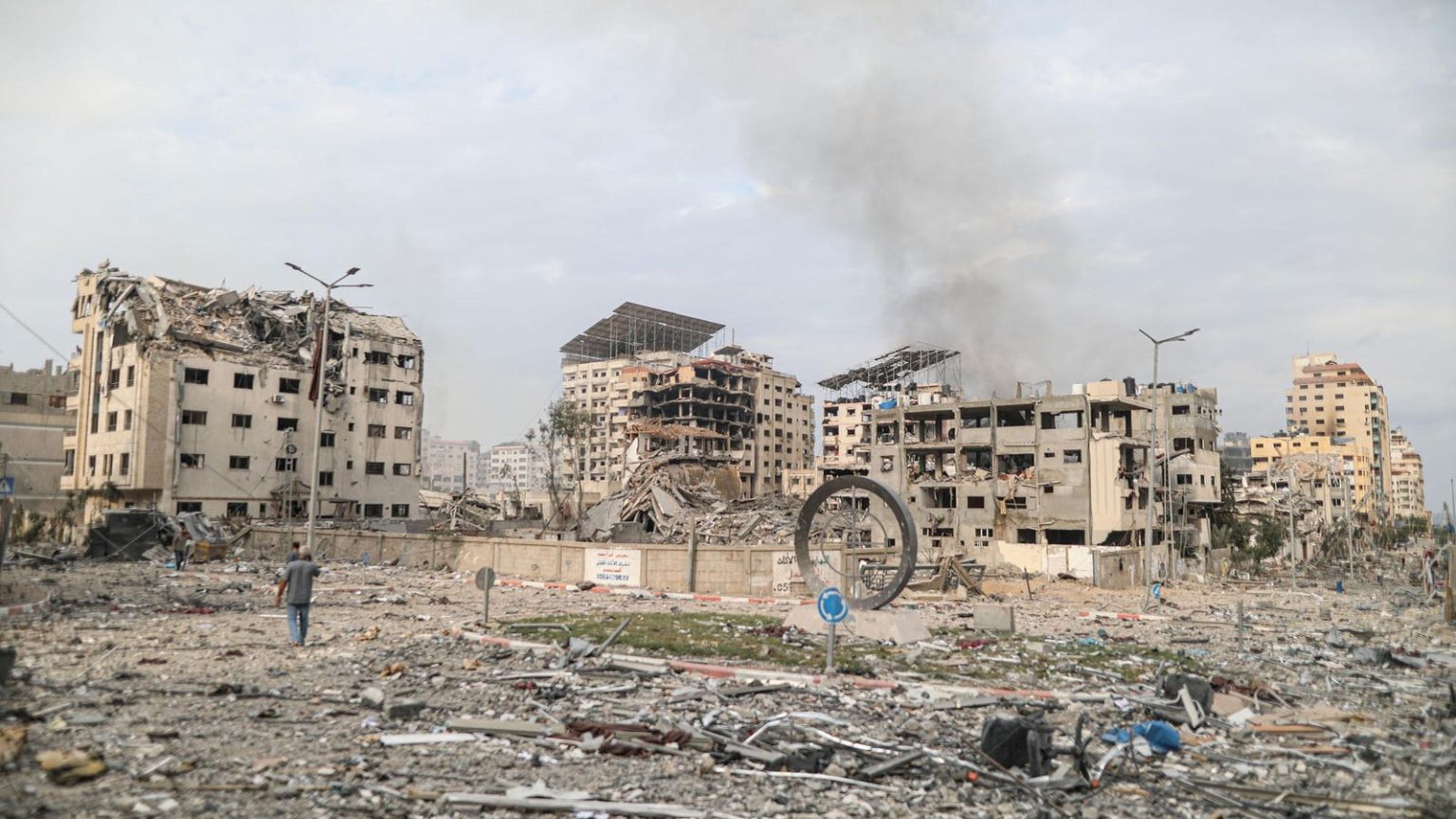The unfolding Israeli siege of the Gaza Strip following Hamas’ massacre of Israeli civilians on Saturday could be even more destructive than Israel’s campaign against the Lebanese capital of Beirut in the summer of 1982.
Israeli Defense Minister Yoav Gallant announced a “complete siege” of Gaza on Monday, declaring: “There will be no electricity, no food, no fuel, everything is closed.”
Roughly 360,000 Israeli reservists have been mobilized since Saturday’s shocking Hamas incursion and subsequent killing of over 900 Israelis.
Israeli military officials announced Tuesday that they had “restored full control” over the Israel-Gaza border four days after that attack. Furthermore, they have found at least 1,500 bodies of Hamas militants who entered Israel, underscoring the unprecedented scale of the infiltration.
Israel Prime Minister Benjamin Netanyahu is adamant that Israeli strikes on Gaza since Saturday, which have killed at least 765 Palestinians, are just the beginning, vowing that what Israel does to its enemies in the coming days “will reverberate with them for generations.”
Israel’s strategic objective is most likely the complete dismantlement of Hamas, which could mean a prolonged siege of Gaza and possibly a ground invasion and even occupation.
There are parallels with the 1982 Lebanon campaign when Israel invaded the country to prevent cross-border rocket attacks by the Palestine Liberation Organization (PLO). That campaign quickly went from a limited cross-border intervention into a full-scale invasion of Lebanon, including a two-month siege of Beirut.
That siege, which saw Israeli forces cut all electricity, water, and food supplies to West Beirut, only ended after an agreement was reached to evacuate the remaining PLO fighters to Tunisia. Casualty estimates at the time exceeded 5,000.
There were approximately 600,000 residents in West Beirut during that siege 41 years ago. Gaza has a population of two million people living in an enclave that’s invariably described as one of the most densely populated areas in the world. West Beirut consisted of 25,000 building in an area of ten square miles.
Hospitals in Gaza are already struggling with severe shortages of medicine, similar to hospitals in besieged Beirut at that time. The director-general of Gaza’s health ministry has warned of a complete collapse of the health system unless the siege is imminently lifted.
One could draw many such parallels from that conflict, but also some key distinctions that underscore how unprecedented the current situation is.
For one, it’s unclear which country would agree to take Hamas fighters if they agreed to a ceasefire and safe passage out of Gaza to end the siege, which is highly unlikely. Furthermore, Israel is not likely to welcome any evacuation of these militants in light of Saturday’s attack, which it has dubbed its 9/11. Consequently, the current siege could last even longer.
The Israeli public, hitherto sharply divided over the judicial overhaul Netanyahu and his right-wing government were pushing, is also fully behind the present campaign. The 1982 war was much different. It was seen as Israel’s first war of choice rather than a purely essential defensive war (the 1956 Suez campaign was, in reality, Israel’s first war of choice). The horrific massacre of Palestinians in Beirut’s Sabra and Shatila refugee camps by Israel’s Lebanese Christian allies was also condemned, and there were large anti-war protests in Israel, until then a rarity.
The current situation is perceived by many Israelis as a necessary and just retaliation for the most deadly assault on the Israeli home front.
Israel frequently attributed high civilian casualties in the 1982 Lebanon war to the PLO’s flagrant use of human shields. Today, Hamas has many Israeli civilians and soldiers captive in Gaza that it can use as shields, another unprecedented aspect of the present situation.
American support is also much different than it was in 1982. Back then, the Reagan administration warned Israel about using American weaponry offensively and even briefly contemplated sanctions. Reagan even used the word holocaust in describing Israel’s siege of Beirut in a phone call with the Israeli prime minister.
The Biden administration has given its full-throated support to Israel, with President Biden summing up his support for Israel’s security as “rock solid and unwavering.”
What happens next is anyone’s guess, but the unprecedented situation could lead to the most brutal siege Israel has ever undertaken.
The Israeli military might follow up the recapture of the border by gradually pushing into Gaza on all sides and establishing a buffer zone. Netanyahu has called on Gazans to leave, which may mean evacuating all border areas and moving closer to the center of the strip. Israeli airstrikes have already displaced an estimated 187,500.
Any buffer zone may extend to Gaza’s south, with Israeli ground forces moving to seize the Palestinian side of the Rafah crossing between Gaza and Egypt to ensure Hamas is entirely cut off from the outside world. That operation would likely entail costly urban battles against Hamas and other militants.
Saturday’s attack was indeed without precedent. And there will likely be little to no precedent for what happens next.
Read the full article here





